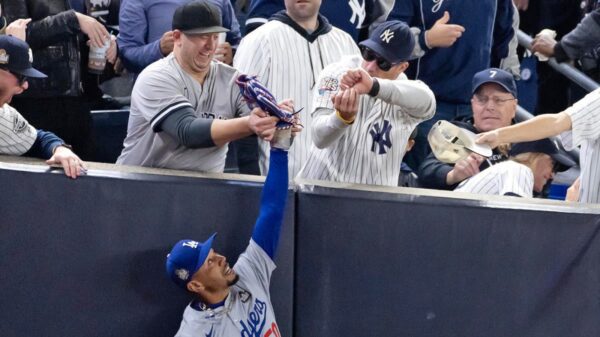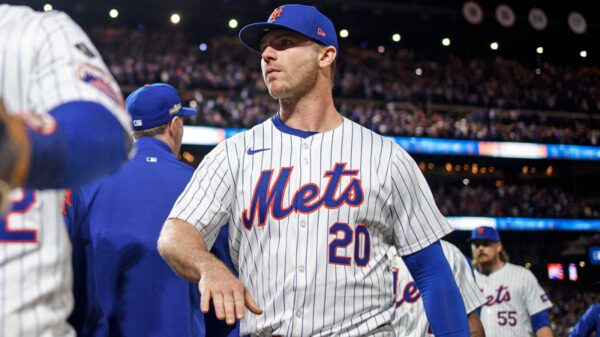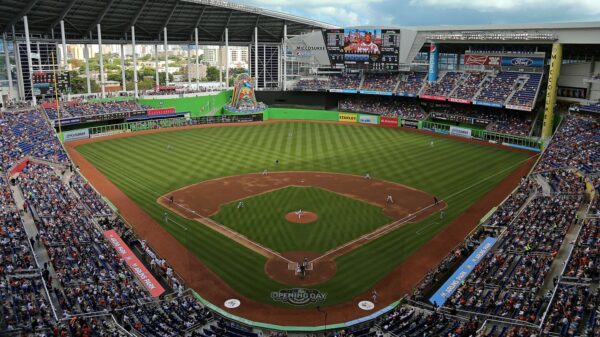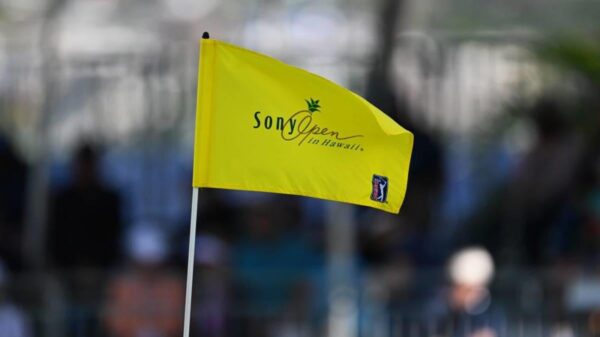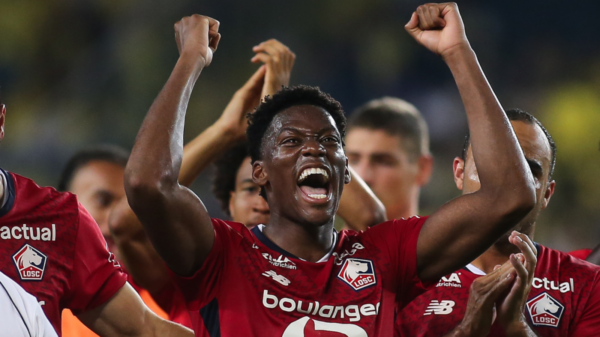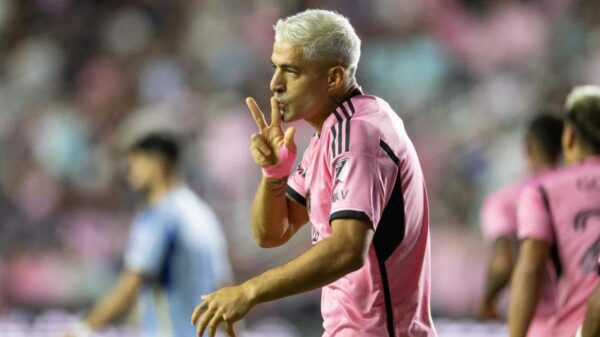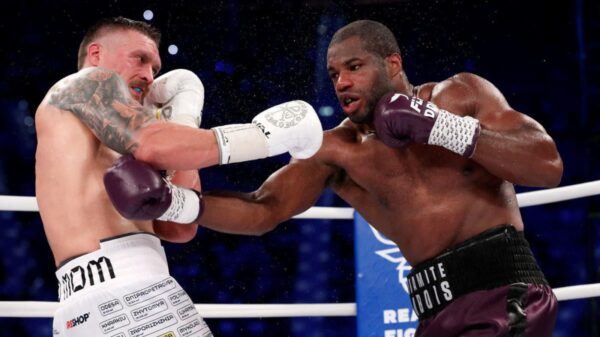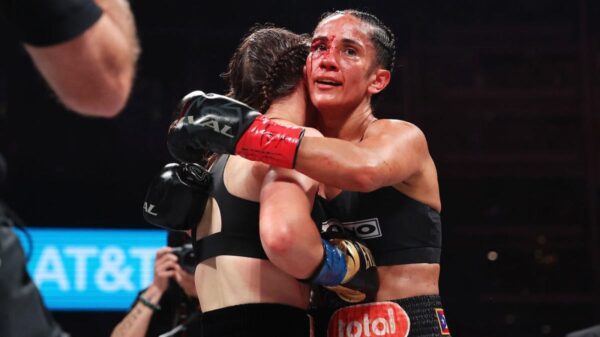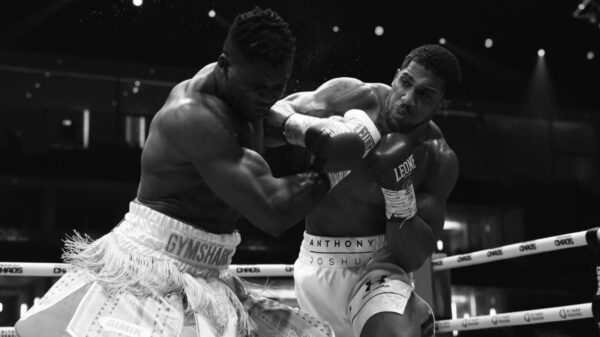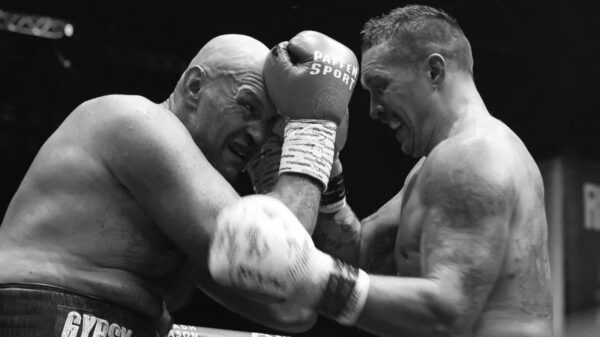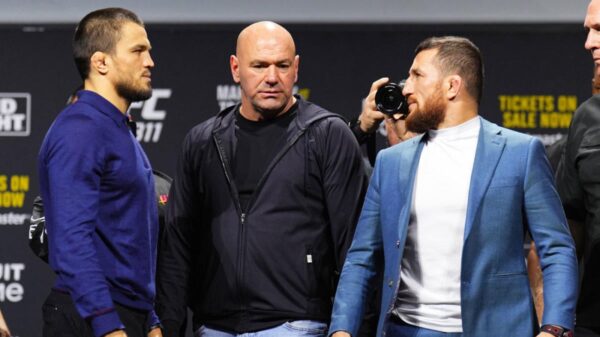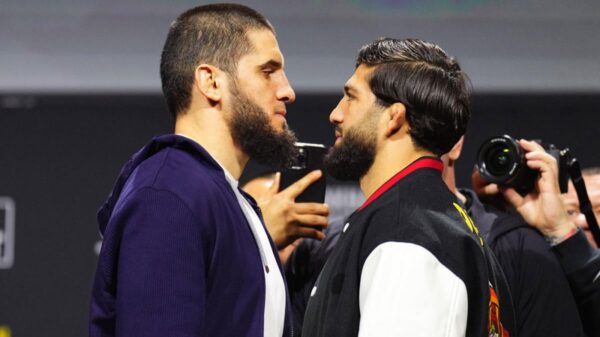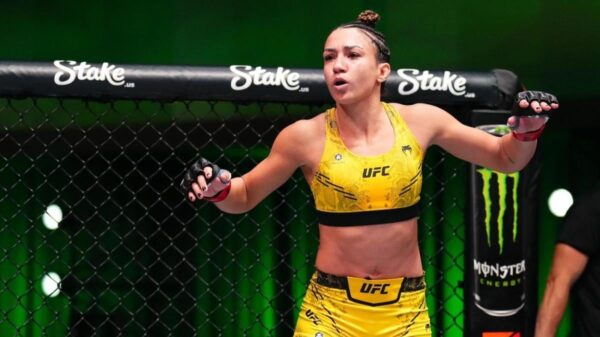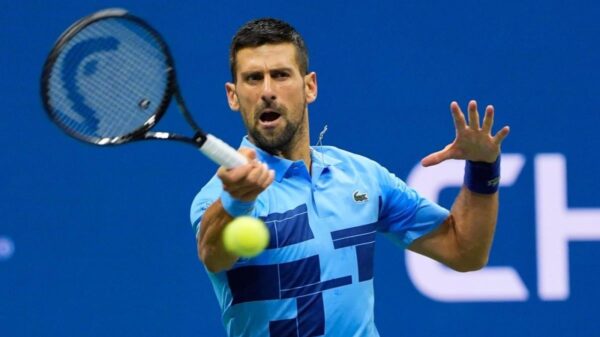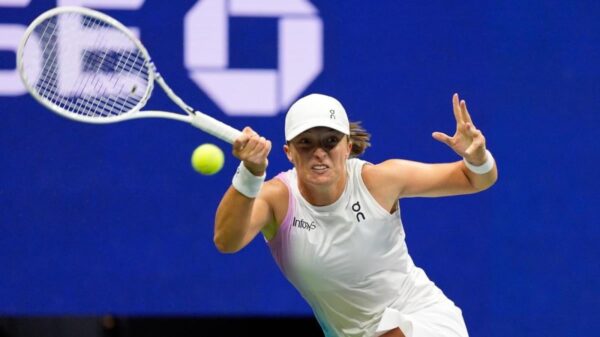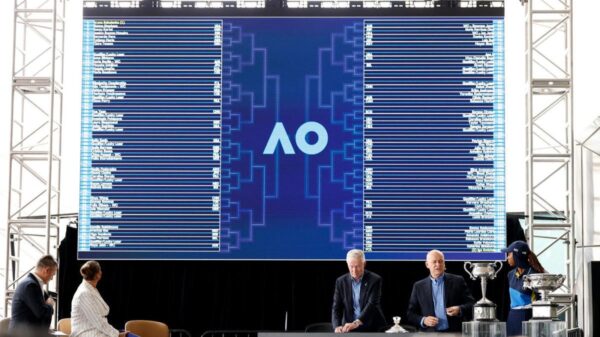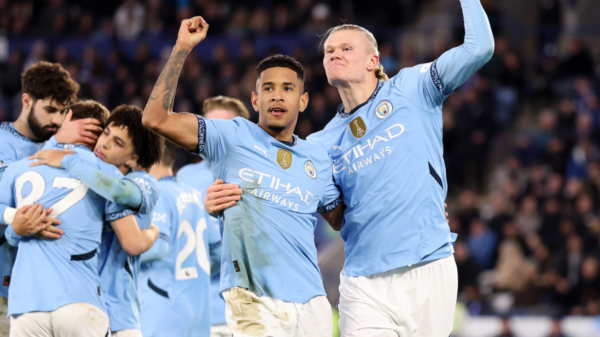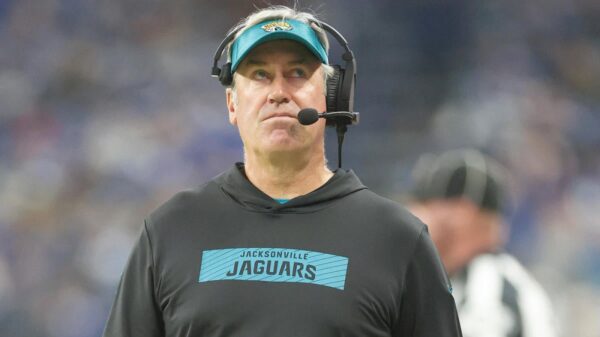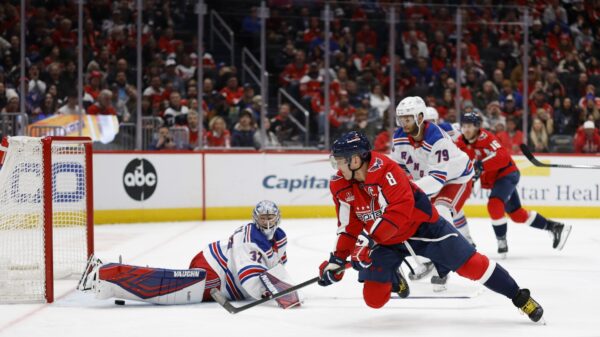In the moment, the NBA’s inaugural In-Season Tournament felt pretty successful. The games were competitive. The players took them seriously. Tyrese Haliburton used it as a launching pad into mainstream stardom. The NBA’s ultimate mainstream star, LeBron James, used it as the cherry on top of what was already an impeccable career. If nothing else, it was a worthwhile experiment. There’s a reason they’re doing this again, after all. The second In-Season Tournament, now rebranded as the NBA Cup, begins on Tuesday.
You can be forgiven if you weren’t aware. As fun as the tournament was as it was happening, it’s impact was fairly short-lived. James grumbled about the effect it had on the Lakers (and Pacers, as the two teams combined to start 2-7 after the tournament final), but otherwise, the season moved on. Focus shifted to the trade deadline and All-Star weekend, and then the playoffs, and then the offseason, and then the Olympics. The 2024-25 season kicked off a month ago, but it hasn’t included much tournament preamble. Fan bases, at least before it has begun, haven’t exactly focused on what their teams will need to do in order to win the Cup.
It’s a relatively new event. Developing traction and excitement takes time. But the second go-round figures to be a bit harder than the first purely for the lack of novelty. If the goal was generate excitement for early-season basketball, especially among casual viewers, last year’s tournament had the advantage of being something new. What we now know having gone through it once is that there’s very little left to be discovered here.
The tournament’s structure deviates only slightly from typical regular-season fare. The games count just as much in the standings as their traditional, regular-season counterparts. There is no team-level incentive to winning besides winning itself. Players have a financial incentive to compete, and that did largely inspire intense games a year ago, but the need for such a financial incentive doesn’t exactly help with the idea that players and teams don’t take the regular season as seriously as they used to. Groups are set according to conference, so teams play against opponents they already see plenty. There are inherent stakes to the games, but half of the final eight teams lost at least once in the group stage. The games aren’t quite as life-or-death as, say, the NCAA’s March Madness tournament, which is the gold standard for the tournament format in American sports.
The advantage of having played the tournament a year ago was that all of this became apparent as it played out, yet the tweaks were minimal for Year 2. The biggest change, aside from the name, comes with the courts. Like last year, teams will use special courts for Cup games, but this year’s crop removes the ugly runways across the middle of the floor in favor of solid colors and concentric circles. It’s an improvement.
It’s also not, in itself, a reason to tune into games. If you’re already watching November and December basketball, you’ll likely enjoy the product the NBA puts out in the coming weeks. The 2024-25 regular season, aside from the rash of injuries, has already produced exceptionally high-quality basketball. The games have been close. The popular officiating changes that came later on last season have stuck. Throw in the intensity boost last year’s tournament created and this year’s run to the Cup should be exciting. It’s just not especially distinct. It’s not a reason for casual viewers, who weren’t already tuning into the NBA, to check in now.
That is something the NBA should try to address as the tournament gets older. There are fortunately a number of ways the league can go about doing so. Here are three potential options.
1. Make it single-elimination
The most obvious place to innovate is tournament structure. To differentiate the tournament from standard regular-season fare, the league should adopt the single-elimination format that makes March Madness so popular. Simply seed the teams according to pre-tournament record and let them play until a winner is crowned.
There are logistical issues that emerge due to league math. You can neatly fit 32 teams into a bracket, but 30 is a bit more complicated. Expansion may one day solve this issue. For now, there are workarounds. A bye for the league’s two best teams would be the easiest. The NBA could also theoretically invite two teams from foreign leagues to participate. The latter would likely be a win for all involved. They could occupy the two last seeds, rewarding the best NBA teams by allowing them a non-NBA opponent in the first round, and the league could use those games as an opportunity to introduce American fans to young prospects who might one day make the jump into the NBA. Just as tantalizingly, the NBA could work with foreign leagues to create some sort of play-in tournament, once again emulating March Madness, which they’ve already successfully done with their postseason.
One problem with the single-elimination format is that the league simply couldn’t send losing teams home for a week or two as the rest of the tournament played out. Aside from it being bad business, it would give teams that lost early an enormous rest advantage for when typical play resumed. The workaround here would be loser’s brackets. If 16 teams win in the first round, 16 teams also lose. Take those 16 losers and start a new bracket. Keep going in that fashion with each passing round, and teams could therefore be assigned an exact final ranking. There wouldn’t just be a tournament winner. Every team would finish between No. 1 and No. 32 in the tournament standings. This means nobody would need to play more or less regular-season games than anyone else, and to add stakes to the tournament, final placement could serve as the universal tiebreaker for the standings at the end of the regular season.
2. Test out some rule changes
Structure is important. The actual basketball product is what matters most, and this is the area in which the NBA should get creative in differentiating the tournament from the regular-season standard. The NBA has largely used the G-League to pilot rule changes, but what if the tournament could serve as a way to do so for a limited sample at the NBA level?
Want to try out a four-point line? Let the best players in the world experiment with it for five games. How about the elimination of the corner 3-pointer, or any change to the 3-point arc? Great, give it a go. How about FIBA’s rule that says balls are live once they’ve hit the rim? It works in the Olympics, so why not see how it fits in the NBA? This could be a way for the NBA to not only differentiate the tournament from the regular season, but also to make each individual tournament distinct. Imagine looking back on different tournaments and comparing the four-point line year to the “no corner 3’s” year. There’s no telling what it would do to the actual basketball, but it would certainly generate interest.
3. Use a different ending
One change that the tournament should absolutely adopt? The Elam Ending. It was a slam dunk at the 2020 All-Star Game (the last actually competitive All-Star Game). The NBA has since reverted to standard fourth-quarter scoring in the All-Star format, but that had more to do with some change being needed due to the lackluster performances the league’s stars were giving. For those unfamiliar with the Elam Ending ruleset, the basic premise is that teams play three standard quarters, and then, rather than playing a traditional, timed fourth, a target score is set based on the scoreboard after three. The league would pick a number (it used 24 in the All-Star Game), add that total to the amount the leading team has after three quarters, and the first team to get to that number wins the game.
There are proponents for adopting this change league-wide, but there’s a very important reason it should be piloted in the tournament: it ensures that every single game has a game-winning shot. Nobody likes the end-of-game free-throw contest the traditional clock so often creates. It exists largely because of tradition at this point, and that’s probably never changing. But using the Elam Ending would add a layer of drama to a small but important slice of the regular season. If nothing else, fans could tune into the game knowing that someone would have to win it at the end with a shot, not by dribbling out the clock.
These are just a few ideas to spruce up what the NBA surely hopes will become a long-term fixture in its regular-season lineup. The league has surely considered others. This event is still in its infancy. Everyone involved is figuring out what exactly it is supposed to mean to the sport moving forward. Whatever that answer is, hopefully it’s more than just a fresh coat of paint slapped on a product that is otherwise not especially different from the rest of the regular season.
Read the full article here







